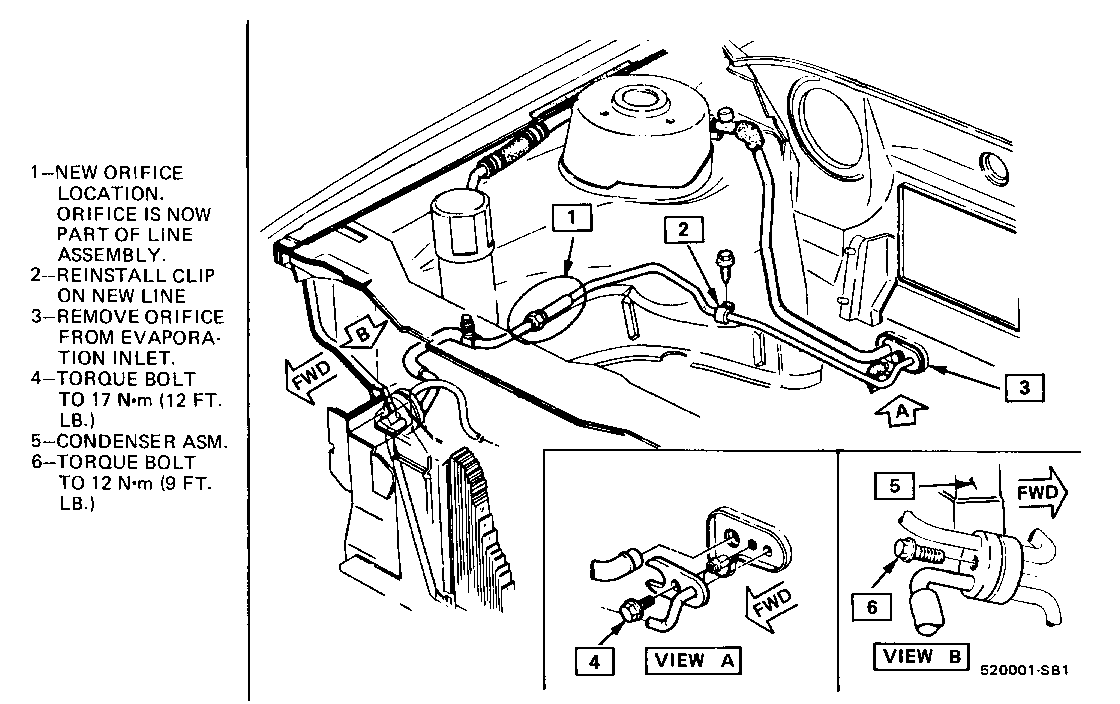A/C COMPRESSOR GROWL NEW CONDENSOR/COMPRESS. HOSE

VEHICLES AFFECTED: 1985 'N' Models Equipped with V-5 Compressor
Air conditioning compressor will make a pumping noise during idle and low speed road conditions with the A/C 'ON'. The sound generally comes from the engine compartment and can be heard in the passenger compartment as a growl sound.
During maximum cooling demand (high ambient temperatures, 'norm' A/C mode selection, and after high blower fan use), compressor pulsation noise is more pronounced.
NOTE: Refer to Product Service Bulletin 85-1-113 for a 'hiss noise' correction. To determine if the hiss correction has been performed on the car, inspect the condenser outlet evaporator inlet tube assembly for an enlarged tube section (see illustration).
Cause:
------ Compressor pumping of refrigerant results in pressure pulses that are transmitted in the suction and discharge hose assemblies.
Correction:
----------- 1. Remove and discard condenser and compressor hose assembly (P/N 10034421) and O-rings.
2. Install new condenser and compressor hose assembly (includes revised discharge muffler and suction muffler), P/N 10039911. Use refrigerant lube on O-rings (part of new hose assembly) and torque compressor end fitting bolt to 26-40 N.m (19-29 lb. ft.), torque bolts for the block joints to 12 N.m (9 lb. ft.) on the condenser end, and 17 N.m (12 lb. ft.) on the evaporator (dash) end.
3. Evacuate and recharge. Use 1.02 kg (2.25 lb.) of R-12 refrigerant.

General Motors bulletins are intended for use by professional technicians, not a "do-it-yourselfer". They are written to inform those technicians of conditions that may occur on some vehicles, or to provide information that could assist in the proper service of a vehicle. Properly trained technicians have the equipment, tools, safety instructions and know-how to do a job properly and safely. If a condition is described, do not assume that the bulletin applies to your vehicle, or that your vehicle will have that condition. See a General Motors dealer servicing your brand of General Motors vehicle for information on whether your vehicle may benefit from the information.
